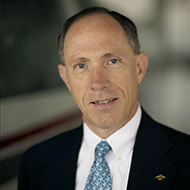A student on final ahead of the subject aircraft completed his touch and go - no factor. A second student was holding at the runway threshold and acknowledged the inbound aircraft was in sight. So far, everything was looking good, and the simulated engine-out aircraft turned final about one-half mile from the end of the runway. That's when the student holding at the threshold decided he could squeeze in the takeoff before the impending arrival. Inside the retractable, the pilot was monitoring the traffic and sweating the second trainer's hurried departure. The trainer lifted off just before the retractable touched down - all the way down.
You can land with mixture lean, no flaps, prop in cruise rpm, and landing lights and carb heat off, and get away with it. But there is one item that you cannot forget. There is nothing quite like the humiliation and remorse a pilot suffers when joining the gear-up club, and we should be humble about heaping scorn on those who do the deed. The owner was mortified by what he had done and after some soul-searching on his part, called AOPA Air Safety Foundation to talk. It is always enlightening to discuss mishaps with people who were actually there to understand what was going on and what they were thinking.
This pilot reported two distinct feelings just prior to the belly slide. First, he was angry at the student's decision to pull out in front of him. The regulations are clear about who has the right of way, and we have all felt indignation in similar circumstances. The judgment needed to gauge a safe departure in a busy pattern is an acquired skill. Most students don't have that judgment right away and usually choose to wait, sometimes interminably. For others, "Hobbs horror" sets in as the hour meter ticks away while they sit on the taxiway watching $1.50 a minute roll by. The next opening in traffic isn't big, but it should be big enough to squeeze in.
The gear-up pilot's second feeling was one of real satisfaction. He had pulled the power at a fairly high altitude and had managed the aircraft's energy to what was shaping up to be a perfect engine-out landing - on speed and in the slot. Was the landing gear warning horn sounding in the background? Yes. Had he run his checklist? Yes; well, most of it. The pilot was busy on short final because he had to manage the airspeed, adjust the trim, and pay attention to the aircraft on the runway.
Gear-up landings have always been with us. They happen to new pilots, experienced pilots, very experienced pilots, and flight instructors. There will be dozens of them this year. The common thread is one of distraction. Anything that breaks the landing routine is a setup for the slide. There are a couple of techniques that may help to keep you focused, but there are no guarantees. First, follow the checklist, and if anything disrupts you, go back and check everything again. On short final I like to do a quick GUMPS check with emphasis on checking the green lights - all of them. I say it out loud and also try to do it when flying fixed-gear aircraft just to keep the habit pattern consistent. I do it every time, every landing. This approach may help your students when they upgrade to retractables. In an unusual situation, where a delayed gear extension is required, such as engine out, put your hand on the gear switch and do not remove it until you have extended the gear and verified that the lights are green.
Finally, when practicing nonstandard procedures it is better not to subject yourself to distractions during prime-time traffic. It takes too much energy to avoid a collision and deal with a simulated emergency. Some might see that as an "ivory tower" suggestion, but problems seem to develop when the margins are reduced. Serious simulated emergency practice might well warrant a safety pilot on board. Two heads are less likely to make a critical error. Did I mention there were no guarantees?
Despite this pilot's mistake, I have the utmost respect for him in sharing his mishap with us in the hopes of passing along an experience that we all wish to avoid. I will also wager that he is now fully inoculated against having another gear-up gotcha.

